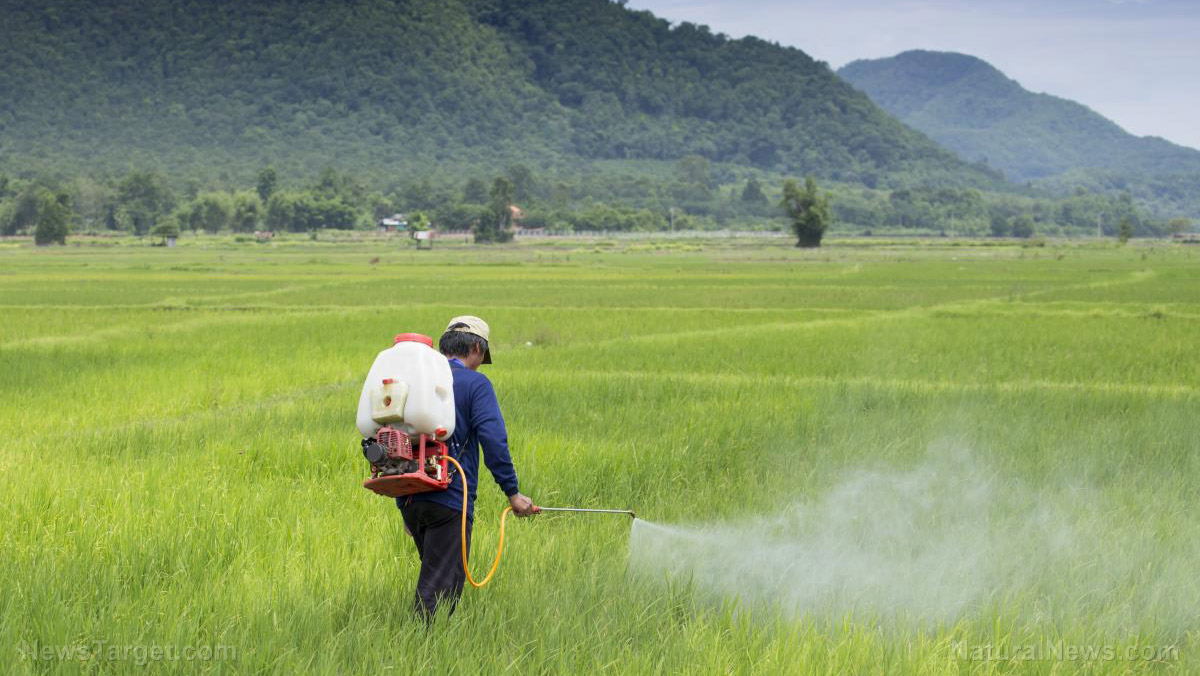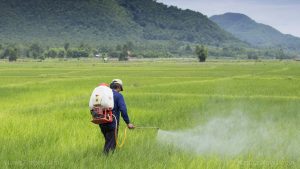Ametryn – toxicity, side effects, diseases and environmental impacts
11/23/2017 / By Michelle Simmons

Ametryn is a selective herbicide that belongs to the triazine chemical family. It is used to control broadleaf and grass weeds in fruits such as citrus fruits, pineapple, and bananas, sugarcane. In addition, it can also be used as a post-directed spray in corn and potato crops for general weed control. The chemical is also used as a vine desiccant on dry beans and potatoes. Moreover, it is also used for total vegetation control. It works by inhibiting photosynthesis and other enzymatic processes. The weeds it controls include Crotalaria, mustard, Dallisgrass, cocklebur, lambsquarters, morning glory, velvetleaf, ragweed, panicum, smartweed, shattercane, nutgrass, wiregrass, goosegrass, crabgrass, sow thistle, purslane, pigweed, and foxtail.
Ametryn can be used in different forms such as an emulsifiable concentrate, flowable wettable powder, and a wettable powder. Since it is absorbed through the roots as they germinate, weeds will grow before dying. It is moderately soluble in water, but even more so in organic solvents. It is also quite volatile and does not leach to groundwater. However, it is moderately persistent tin soils and can last for long periods of time in water under certain conditions. This chemical is not approved for use by the European Union. Ametryn has the molecular formula of C9H17N5S.

List of known side effects
There are a few known side effects of ametryn exposure in humans. This chemical is known to be harmful if swallowed and toxic if inhaled. Symptoms of acute exposure to high levels of ametryn include nausea, vomiting, diarrhea, muscle weakness, and salivation. In addition, the chemical was found to cause moderate irritation in the eyes, skin, and respiratory tract through eye contact, skin contact, or inhalation.
The environmental side effects of ametryn is that was found to be moderately toxic to mammals and birds, while it is moderately to extremely toxic to most aquatic organisms, honey bees, and earthworms.
Body systems affected by ametryn
The body systems adversely affected by ametryn include the ocular, integumentary, respiratory, muscular, and digestive systems.
Items that can contain ametryn
Ametryn can be found in herbicide products used to control grass weeds, such as Bermuda grass, wiregrass, goosegrass, crabgrass, and broad-leaved weeds, such as dallisgrass, thistle, purslane, pigweed, cocklebur, lambsquaters, morning glory, and foxtail. Some of the brand names that use this active ingredient are Ametrex, Evik, Gesapax, Almulex, Duroplant, Trinatox-D, Crisazina-Crisatrina Kombi, Mebatryne, and Amephyt.
How to avoid ametryn
Ametryn can be avoided in several ways. First, it should be stored properly in a cool, dry place. It should also be out of reach of children. Skin contact with the chemical can be avoided by wearing protective clothing such us rubber gloves and clothing consistent with good pesticide handling practice. To prevent eye contact with the chemical, the use of chemical safety glasses or goggles is advised. Moreover, to avoid inhalation of the chemical, it should be handled in a properly ventilated area. However, if proper ventilation is not available, a proper pesticide respirator should be used.
Where to learn more
Summary
Ametryn is a selective triazine herbicide that is used to control broad-leaf weeds and grass weeds by inhibiting photosynthesis and other enzymatic processes in target plants.
Ametryn can cause nausea, vomiting, diarrhea, muscle weakness, and salivation.
Ametryn can cause moderate irritation in the eyes, skin, and respiratory tract.
Ametryn adversely affects the ocular, integumentary, respiratory, muscular, and digestive systems.
Ametryn is toxic to mammals, birds, aquatic organisms, honey bees, and earthworms.
Sources include:
Tagged Under:



















